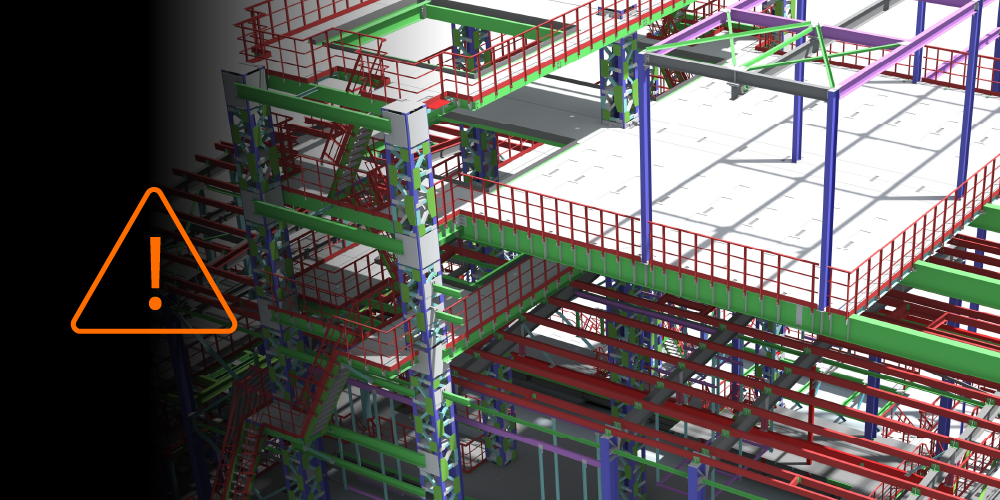Related Articles
— 7 min read
What Should a Construction Cost Report Include? Key Elements and Best Practices

Last Updated Aug 28, 2025

Josh Krissansen
47 articles
Josh Krissansen is a freelance writer with two years of experience contributing to Procore's educational library. He specialises in transforming complex construction concepts into clear, actionable insights for professionals in the industry.
Samantha Nemeny
30 articles
Sam—Samantha if she’s feeling particularly academic—has spent a decade in content marketing, with eight years focused on Australia’s construction industry. She has a knack for making complex ideas easy to understand, turning industry jargon into clear, engaging stories. With a background in SEO and marketing, she’s spent the past three years at Procore, helping industry professionals navigate the world of construction with content that’s both insightful and easy to digest.
Last Updated Aug 28, 2025

Cost reporting is central to maintaining financial control on construction projects. It offers visibility into budget status, flags potential risks early, and supports timely, informed decision-making.
In this article, we explore cost reporting in the Australian construction industry, examining fundamental components and exploring how to overcome common cost reporting challenges.
Table of contents
What Is a Construction Cost Report?
A construction cost report is a financial management tool that tracks a project's actual costs against its approved budget. It forecasts future expenses, highlights deviations, and helps project teams maintain financial control across labour, materials, equipment, and other key cost categories.
Accurate, up-to-date cost reports serve multiple critical functions:
- Cost control: Identifying budget overruns early for timely corrective action.
- Financial planning: Supporting cash flow forecasting and final cost projections.
- Performance monitoring: Measuring actual spending against the budget baseline.
- Decision making: Providing real-time data for informed financial choices.
- Risk management: Highlighting emerging cost risks before they impact project outcomes.
Cost reporting is an ongoing, analytical process that supports smarter financial decisions throughout the project lifecycle. It’s not just record-keeping. It’s active financial management aligned with project performance.
What’s Included In a Cost Report?
Cost reports contain several key elements that work together to provide a comprehensive view of project finances. Each component delivers specific insights for decision-making and financial control.
1. Budget vs Actual Costs
A line-by-line comparison of actual project spend against the approved budget baseline includes:
- Original budget: Baseline cost estimates from the tender or approved design.
- Committed costs: Signed contracts and purchase orders.
- Incurred costs: Spent funds (invoices paid, payroll, etc.).
- Remaining forecast: Anticipated costs to complete the project.
- Variance: Difference between budgeted amounts and actuals.
Tracking actuals against the budget enables early detection of financial drift across phases, forming the foundation for executive reviews and mid-project reforecasting.
2. Variance Analysis and Change Orders
Variance analysis quantifies cost deviations and isolates root causes, whether related to procurement gaps, scheduling delays, or productivity issues.
It supports corrective action planning and links directly to profitability indicators like projected overs or unders, helping teams project final financial outcomes with greater accuracy.
Similarly, change order logs track financial impacts of scope changes, keeping budgets aligned with evolving project conditions and mitigating scope creep.
3. Cost Forecast
Cost forecasts project the total cost at completion based on current trends and known variables. They integrate committed spend, pending cost changes, and updated execution plans.
These forecasts drive cash flow planning, scenario analysis, and mid-project re-forecasting.
4. Cost Categories
Costs are grouped by trade, project phase, cost code, or work breakdown structure (WBS) enable precise accountability, simplify compliance reporting, and support detailed performance analysis at the line-item level.
5. Contingency Funds
The contingency funds section isolates buffer allocation for scope gaps, escalation, and risk response.
Often reviewed during cost-to-complete meetings, these insights help protect margins and support disciplined drawdown tracking.
Types of Costs Tracked in Construction Reporting
Construction costs are typically grouped into four main categories: direct, indirect, fixed, and variable. Each serves a distinct function in shaping the project’s overall financial framework.
| Cost Type | Description | Examples | Strategic Relevance |
| Direct costs | Costs tied directly to physical construction activities | Labour wages, concrete, steel, equipment rental | Primary driver of project spend. Tacked at the cost code level |
| Indirect costs | Costs necessary for project delivery but not linked to specific work items | Insurance, admin, security, project management | Captured at the overhead level. Important for total cost transparency |
| Fixed costs | Costs that remain stable regardless of project size or duration | Office rent, salaries, licensing fees | Help define baseline burn rate and long-term financial commitments. |
| Variable costs | Costs that change based on construction activity or external market conditions | Hourly labour, fuel, material price changes | Key to forecast accuracy. Require active monitoring and adjustment |
Common Cost Reporting Challenges and How To Solve Them
Even well-structured cost reporting systems face challenges that can impact accuracy and effectiveness. Understanding these challenges and implementing targeted solutions helps maintain the integrity of financial reporting across projects.
Maintaining Data Accuracy and Consistency
Inconsistent inputs and manual data entry create financial discrepancies that undermine reporting confidence and weaken decision-making at both site and executive levels.
Strategies to improve data accuracy include:
- Establishing a shared cost coding structure across all departments and projects.
- Using integrated project and accounting systems to eliminate duplicate entry points.
- Implementing field-friendly data capture tools that reduce friction for site teams.
- Building review and approval workflows into data entry processes to catch issues early.
- Running monthly data quality audits to verify cost categorisation and completeness.
Ensuring Data Remains Current
Delayed cost reporting creates outdated financial snapshots that compromise forecasting and prevent timely course corrections. Methods for keeping cost data current include:
- Deploying cloud-based platforms that connect field and office teams in real time.
- Assigning clear accountability for updating costs within set reporting intervals (e.g., daily site costs logged by 4pm).
- Integrating cost tracking with procurement and scheduling tools to trigger automatic updates.
- Using mobile tools to streamline the on-site logging of labour hours, deliveries, and equipment use.
Managing Change Orders Effectively
When scope changes aren't captured in real time or accurately reflected in budgets, teams lose financial visibility and risk budget overruns. Key approaches:
- Creating structured digital workflows for submitting and approving change events, with audit trails and budget linkages.
- Tying each change order to cost codes and schedule impacts within the reporting system.
- Setting up automated budget updates when change orders are approved to ensure reporting reflects the current financial reality.
- Building forecast recalculation triggers into systems so that updates cascade across dashboards and cost projections.
Allocating Overhead and Indirect Costs
Inconsistently grouped indirect expenses distort project profitability and compromise margin analysis. Without accurate allocation, historical cost data can’t adequately inform future bids.
Strategies to improve overhead and indirect cost allocation include:
- Using a centralised model to define how overheads are distributed (e.g., by cost code, phase, or resource usage).
- Applying automation rules within financial software to allocate recurring costs like insurance, office expenses, and supervision hours.
- Incorporating indirects into WBS-level reporting so they are visible alongside direct spend.
- Conducting quarterly reviews to recalibrate allocation models based on real project dynamics.
Accurately Forecasting Future Costs
Cost forecasts often rely on static data or subjective assumptions rather than dynamic inputs tied to actual performance and market conditions. Inaccurate forecasting limits cash flow planning, exposes projects to cost shocks, and reduces trust in project controls. Methods to improve forecasting accuracy include:
- Shifting from static to rolling forecasts updated on a set cadence (e.g., weekly).
- Using historical data models and trend-based logic to project future spend across trades or work packages.
- Integrating forecasting tools with real-time cost and schedule data to surface potential drift early.
- Applying sensitivity analysis and scenario planning methods to stress-test project outcomes and prepare for volatility.
Using Technology for Cost Reporting in Construction
Technology plays a critical role in strengthening cost reporting practices across modern construction projects. The right platforms provide real-time visibility, enhance forecasting accuracy, and streamline collaboration across teams.
Advanced Analytics and Forecasting Tools
Analytics platforms help project teams move beyond static reporting and identify emerging financial trends earlier. Key capabilities typically include:
- Trend-based modelling across project phases or portfolios
- Pattern recognition in cost deviations for future pricing
- Proactive financial planning throughout the project lifecycle
Portfolio-Level Visibility in Real Time
Cost management software provides live access to consolidated cost data across multiple active jobs, improving responsiveness and governance. It can:
- Give executives and finance teams immediate visibility into performance across projects.
- Enhance responsiveness in environments where issues in one project can affect others.
- Enable more consistent top-down financial oversight and intervention when needed.
Centralised Cost Intelligence
Consolidating financial data, historical benchmarks, and reporting standards, teams can make faster, better-informed decisions, supporting:
- Vendor performance tracking across trades
- Regional trend analysis for strategic planning
- Aligned budgeting approaches supporting business objectives
Scalable Automation Infrastructure
Automation reduces the time and administrative overhead needed to maintain accurate, up-to-date cost reports at scale, helping to:
- Reduce manual entry through rule-based workflows and templates.
- Ensure consistent cost tracking across teams, regions, and project types.
- Free up commercial and finance teams to focus on forecasting and analysis.
Cross-Functional Coordination and Data Transparency
Real-time reporting tools bring project managers, finance teams, procurement, and leadership onto a shared financial platform. This approach:
- Strengthens alignment between cost control and operational delivery.
- Improves collaboration by providing shared access to up-to-date project data.
- Enables collaborative, audit-ready documentation for clients, banks, and funding partners.
Historical Benchmarking for Future Planning
Structured capture of historical cost data allows businesses to plan and estimate future work with greater accuracy, enabling:
- Rapid access to actual rates, lead times, and cost outcomes from past projects.
- Data-driven estimating and risk planning based on proven historical performance.
- More accurate margin forecasting during tendering and preconstruction phases.
Construction cost reports strengthen financial control and project delivery.
Construction cost reporting gives project teams the visibility and control needed to manage budgets proactively and respond to risks early.
Through tracking real-time spending and forecasting future costs, teams can protect margins, strengthen financial planning, and deliver projects more efficiently.
Categories:
Written by

Josh Krissansen
47 articles
Josh Krissansen is a freelance writer with two years of experience contributing to Procore's educational library. He specialises in transforming complex construction concepts into clear, actionable insights for professionals in the industry.
View profileReviewed by
Samantha Nemeny
30 articles
Sam—Samantha if she’s feeling particularly academic—has spent a decade in content marketing, with eight years focused on Australia’s construction industry. She has a knack for making complex ideas easy to understand, turning industry jargon into clear, engaging stories. With a background in SEO and marketing, she’s spent the past three years at Procore, helping industry professionals navigate the world of construction with content that’s both insightful and easy to digest.
View profileExplore more helpful resources

Managing Direct Costs in Construction: How Visibility Drives Profitability
Direct costs define the financial reality of every construction project. They cover the labour, materials, and equipment that drive delivery and determine profitability. But even the best-planned budgets can shift...

BIM Clash Detection: Reducing Rework, Delays, and Risk in Construction
Design clashes can be a significant hidden cost in construction, as each conflict between systems risks expensive rework, project delays, and reduced margins. BIM clash detection empowers teams to identify...

Next-Gen Job-Costing: Ready to Move? 5 Things to Consider Before You Get Started
In this three-part series, Quantity Surveyor turned Financial Solutions Specialist Clint Burgess uncovers the real-world gains for people, processes, and profits when businesses move from legacy to next-generation Enterprise Resource...

From Workarounds to Workflow: Solving Construction’s Legacy Job-Costing System Challenges with Next-Gen Tools
In this three-part series, Quantity Surveyor turned Financial Solutions Specialist Clint Burgess uncovers the real-world gains for people, processes, and profits when businesses move from legacy to next-generation Enterprise Resource...
